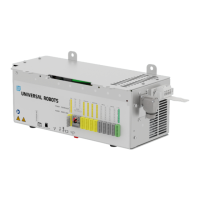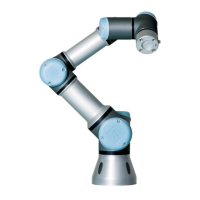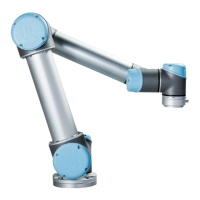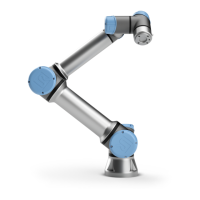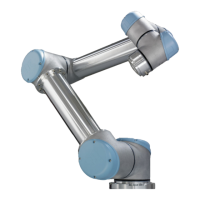9.2.9. Using the Move Tab
Description Use the Move Tab screen to move (jog) the robot arm directly, either by
translating/rotating the robot tool, or by moving robot joints individually.
To use the
Move Tool
arrows
Hold down any of the Move Tool arrows to move the robot arm in the corresponding direction.
•
The Translate arrows (upper) move the tool flange in the direction indicated.
•
The Rotate arrows (lower) change the orientation of the tool in the indicated direction.
The rotation point is the Tool Center Point (TCP), i.e.the point at the end of the robot
arm that gives a characteristic point on the tool. The TCP is shown as a small blue ball.
Robot If the current position of the TCP approaches a safety plane, a trigger plane, or the orientation
of robot tool is near the tool orientation boundary limit , a 3D representation of the proximate
boundary limit is shown. The visualization of boundary limits is disabled during program
execution.
Safety planes display in yellow and black with an arrow indicating which side of the plane, the
robot TCP is allowed to be positioned.
Trigger planes display in blue and green with an arrow indicating the side of the plane, where
the Normal mode limits are active.
The tool orientation boundary limit is visualized with a spherical cone together with a vector
indicating the current orientation of the robot tool. The inside of the cone represents the
allowed area for the tool orientation (vector).
When the robot TCP is no longer in proximity of the limit, the 3D representation disappears. If
the TCP is in violation or very close to violating a boundary limit, the visualization of the limit
turns red.
User Manual 126 UR30
Copyright © 2009–2024 by UniversalRobotsA/S. All rights reserved.
